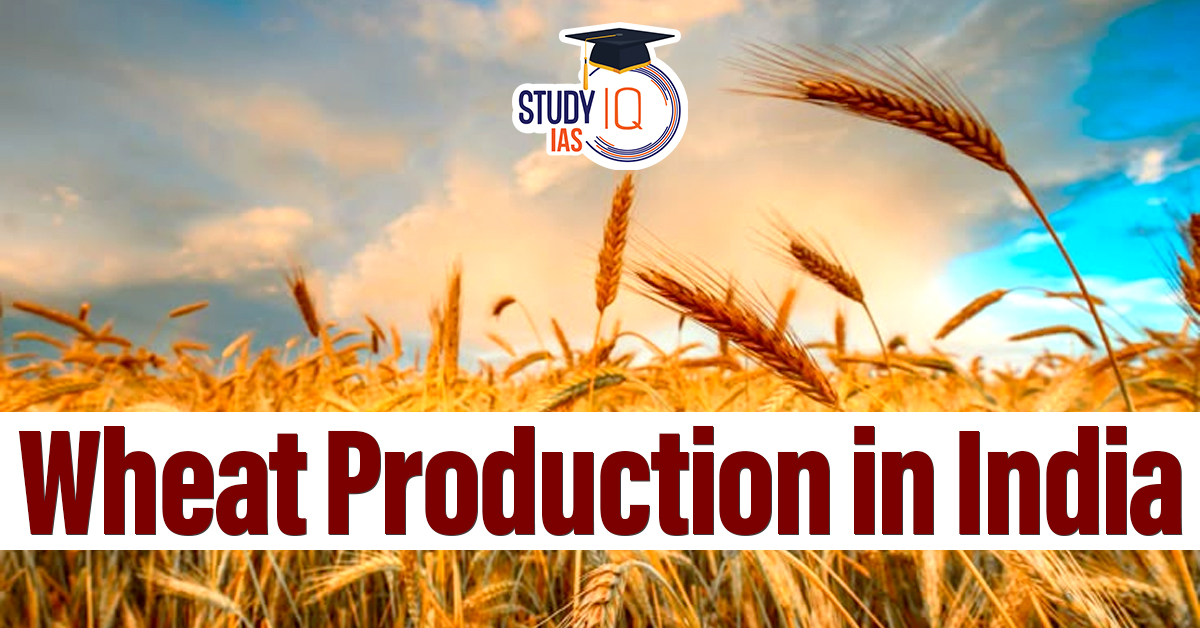Table of Contents
Context: The Indian Meteorological Department (IMD) has warned that March 2025 will experience above-normal temperatures and a higher number of heatwave days. This coincides with India’s wheat harvest season, posing a serious threat to wheat production.
Wheat Production in India
India is the second-largest producer of wheat in the world after China, playing a crucial role in global food security. Wheat is a staple crop in India, primarily grown in the Rabi season (sown in October-December and harvested in March-April). The major wheat-producing states include Uttar Pradesh, Punjab, Haryana, Madhya Pradesh, Rajasthan, and Bihar, with the Indo-Gangetic plains being the most fertile region.
Impact of Heat on Wheat Crops
Global warming reduces wheat grain yield and quality by affecting
- Photosynthesis and respiration.
- Nutrient absorption and water regulation.
- Stress-induced hormones and proteins.
- Grain number, size, and biomass production.
Temperature
The optimum temperature for wheat during later growth stages should not exceed 30°C, but rising temperatures are shortening the grain-filling period.
Scientific Explanation of Heat Stress on Wheat
- Early flowering & faster ripening → Reduced starch accumulation → Lighter grains & lower wheat output.
- Higher protein but lower starch content → Poorer milling quality & lower market prices.
- Desperate farmers overuse fertilizers and pesticides → Inefficient resource use and long-term soil damage.
| Wheat Cultivation in India |
|
The Role of the Indian Ocean in Rising Temperatures
- The Indian Ocean is warming at an alarming rate.
- A study by the Indian Institute of Tropical Meteorology, Pune has predicted that;
- By the end of the century, the Indian Ocean will be in a near-permanent heatwave state.
- Marine heatwave days to increase from 20 to 220-250 per year.
- Impact on India’s Monsoon:
- Delayed kharif crop season → Delayed rabi sowing → Rabi wheat harvest coincides with early heatwaves.


 Places in News for UPSC 2026 for Prelims...
Places in News for UPSC 2026 for Prelims...
 Lake Natron: Location, Features, Wildlif...
Lake Natron: Location, Features, Wildlif...
 Erra Matti Dibbalu Added to UNESCO Tenta...
Erra Matti Dibbalu Added to UNESCO Tenta...

























